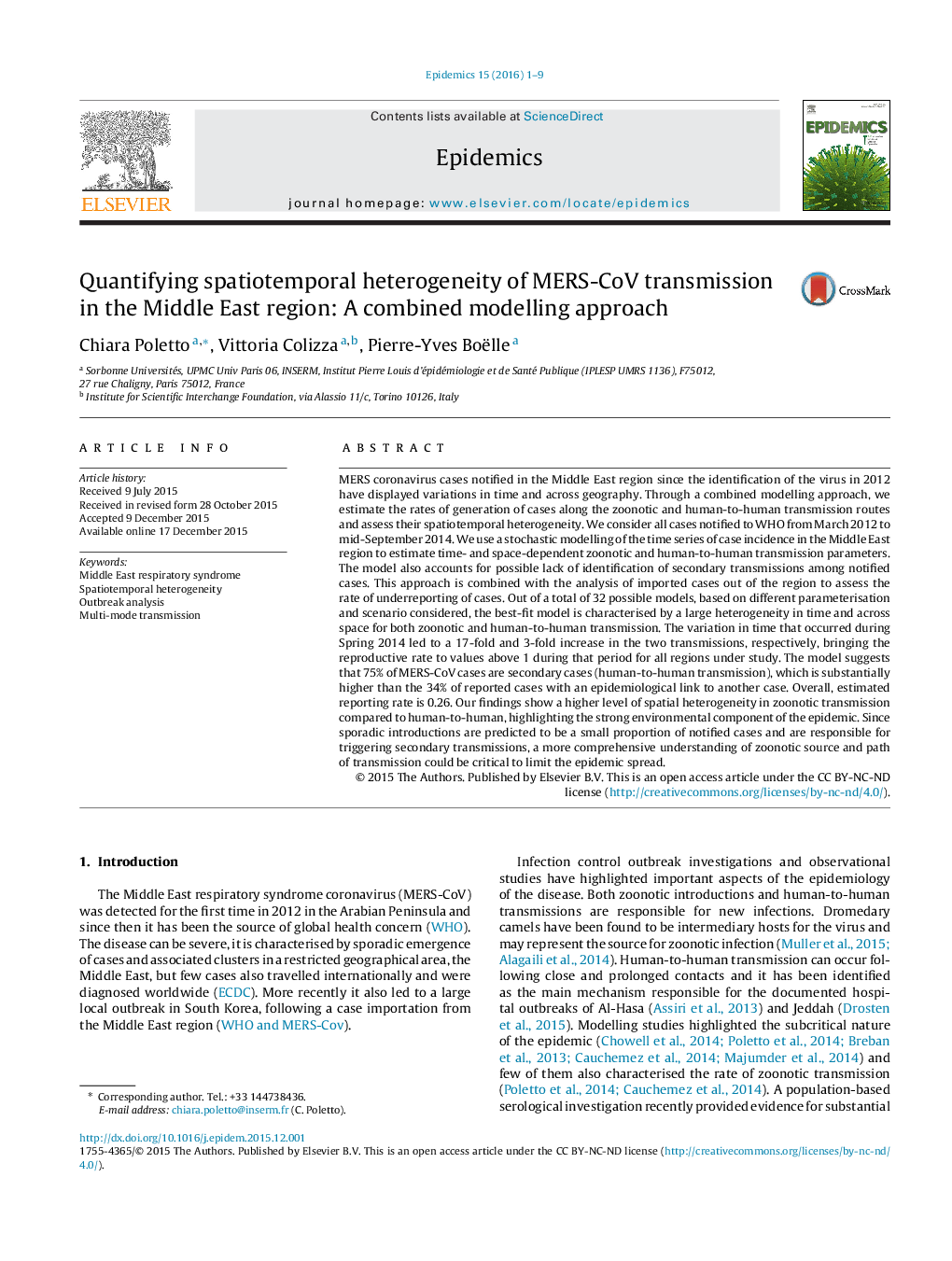| کد مقاله | کد نشریه | سال انتشار | مقاله انگلیسی | نسخه تمام متن |
|---|---|---|---|---|
| 2813530 | 1569432 | 2016 | 9 صفحه PDF | دانلود رایگان |

• We modelled MERS epidemic in the Middle East region up to September 2014.
• We assessed spatiotemporal variation in zoonotic and human transmission.
• Spring 2014 wave showed a 17-fold and 3-fold increase in the above transmissions.
• Zoonotic transmission has a larger spatial heterogeneity than human transmission.
• Human transmission is more frequent than expected (75% of cases vs. 34%).
MERS coronavirus cases notified in the Middle East region since the identification of the virus in 2012 have displayed variations in time and across geography. Through a combined modelling approach, we estimate the rates of generation of cases along the zoonotic and human-to-human transmission routes and assess their spatiotemporal heterogeneity. We consider all cases notified to WHO from March 2012 to mid-September 2014. We use a stochastic modelling of the time series of case incidence in the Middle East region to estimate time- and space-dependent zoonotic and human-to-human transmission parameters. The model also accounts for possible lack of identification of secondary transmissions among notified cases. This approach is combined with the analysis of imported cases out of the region to assess the rate of underreporting of cases. Out of a total of 32 possible models, based on different parameterisation and scenario considered, the best-fit model is characterised by a large heterogeneity in time and across space for both zoonotic and human-to-human transmission. The variation in time that occurred during Spring 2014 led to a 17-fold and 3-fold increase in the two transmissions, respectively, bringing the reproductive rate to values above 1 during that period for all regions under study. The model suggests that 75% of MERS-CoV cases are secondary cases (human-to-human transmission), which is substantially higher than the 34% of reported cases with an epidemiological link to another case. Overall, estimated reporting rate is 0.26. Our findings show a higher level of spatial heterogeneity in zoonotic transmission compared to human-to-human, highlighting the strong environmental component of the epidemic. Since sporadic introductions are predicted to be a small proportion of notified cases and are responsible for triggering secondary transmissions, a more comprehensive understanding of zoonotic source and path of transmission could be critical to limit the epidemic spread.
Journal: Epidemics - Volume 15, June 2016, Pages 1–9